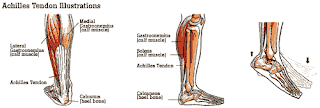1. The feet should be held evenly on the floor with the toes straight.
2. The feet should never sickle, especially in demi-pointe or releve.
3. Children should not curl their toes to give the illusion of higher arches when pointing their feet.
4. A demi-plie should be taught to originate from the hips and children should not force it by pronating the feet.
5. A half-toe position should not be held for an extended period of time because it can cause irritation to the bones in the feet.
6. The heel must remain on the floor as long as possible in tendu to properly stretch the leg and foot. When the heel and arch leave the floor, all the muscles in the ankle must stretch and the muscles under the instep should tighten slightly to avoid sickling the foot.
Pointe work is another important issue for young dancers. Begininning pointe work is very serious and should be done with care. Dancers should not begin pointe work until they are at least eleven or twelve. She should be mature both mentally and phsycially. She should also have the strength for pointework, as being weak on pointe makes you very prone to injury. It is very rare for a class to begin pointework as a whole, so if you are behind your class don't worry! Just keep working up your strength and focus and you will be caught up with your class soon.
If a child does start pointe be sure they are prepared. They should be properly fitted and have proper padding in their shoes. This may include a toe spacer, like the one on vailfoot.com, to avoid bunions. If you have any further questions about how to protect your feet or need to adress a problem with your feet, call our office today at 419-423-1888Remember, your health always comes first!!
If a child does start pointe be sure they are prepared. They should be properly fitted and have proper padding in their shoes. This may include a toe spacer, like the one on vailfoot.com, to avoid bunions. If you have any further questions about how to protect your feet or need to adress a problem with your feet, call our office today at 419-423-1888Remember, your health always comes first!!


















































